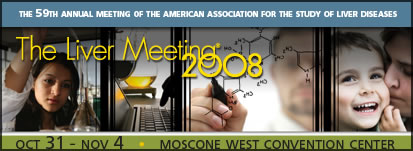| |
| Randomized study comparing Peginterferon-alfa2a plus Ribavirin and Peginterferon-alfa2b plus Ribavirin in naïve patients with chronic hepatitis C: final results of the Milan Safety Tolerability (MIST) study |
|
 Maria Grazia Rumi, Maria Grazia Rumi,
Alessio Aghemo,
Gian Maria Prati,
Roberta D’Ambrosio,
Maria Francesca Donato,
Antonio Russo,
Nicoletta Cerami,
Roberta Soffredini,
Massimo Colombo |
|
| Background Ribavirin (RBV) combined with either PegIFN-alfa2a or PegIFN-alfa2b is the standard of care for chronic hepatitis C. Despite substantial differences in the pharmacokinetic and pharmacodynamic profile of the two PegIFNs, the safety, tolerability and efficacy of the two regimens are considered similar, however in the absence of comparative sudies. Aim The primary endpoint was to compare the safety and tolerability of the 2 regimens. The secondary endpoint was to compare efficacy. Methods From September 2003 to April 2007, all consecutive treatment-naïve patients infected with chronic hepatitis C were randomly (1:1) assigned, based on HCV genotype, to receive either PegIFN-alfa2a 180 µg/wk plus daily RBV 800–1200 mg (Group A) or PegIFN-alfa2b 1.5 µg/kg/week plus daily RBV 800-1400 mg (Group B), for standard duration based on HCV genotype. RBV was weight dosed in patients receiving PegIFN-alfa2b and in HCV-1 and 4 patients treated with PegIFN-alfa2a. Patients with HCV-2 and 3 on PegIFN-alfa2a, received a fixed dose of 800 mg/day RBV. A sample size of 210 subjects for each group was planned to achieve more than 80% power to detect a non-inferiority margin difference of 10%. |
|
| Results 431 patients (212 PegIFN-alfa2a and 219 PegIFN-alfa2b) were enrolled and received treatment. The 2 groups had similar baseline characteristics like median age (54 yrs vs 56 yrs), sex (males 60% vs 55%), BMI (25.5 kg/m2 vs 24.8 kg/m2), cirrhosis (20% vs 18%) and genotype distribution (HCV 1-4: 51% vs 52%). By intention to treat, the two groups showed similar rates of treatment related serious adverse events (2% vs 2%), drop out rates for side effects (7% vs 6%), neutropenia (ANC <0.75 x 109 cells/L) (22% vs 16%), use of GCSF (10% vs 7%), thrombocytopenia (<75 x 109 cells/L) (2% vs 1%) or anemia (<10 g/dL) (17% vs 24%). The overall end of treatment response (ETR) rate was 78% vs 67% (p=0.009), being 62% vs 42% in HCV 1-4 (p=0.004 ) and 95% vs 92% in HCV 2-3 (p=0.9). The overall sustained virological response (SVR) rate was higher in Group A vs Group B (66% vs 54%, p=0.02), being 48% vs 32% in HCV 1-4 (p=0.02), 96% vs 82% in HCV-2 (p=0.01) and 65% vs 69% in HCV-3 (p=0.8). Conclusions While the two regimens showed a similar safety and tolerability profile, the PegIFN-alfa2a based treatment yielded significantly higher SVR rates than PegIFN-alfa2b. |
|
|
| |
|
|
|
